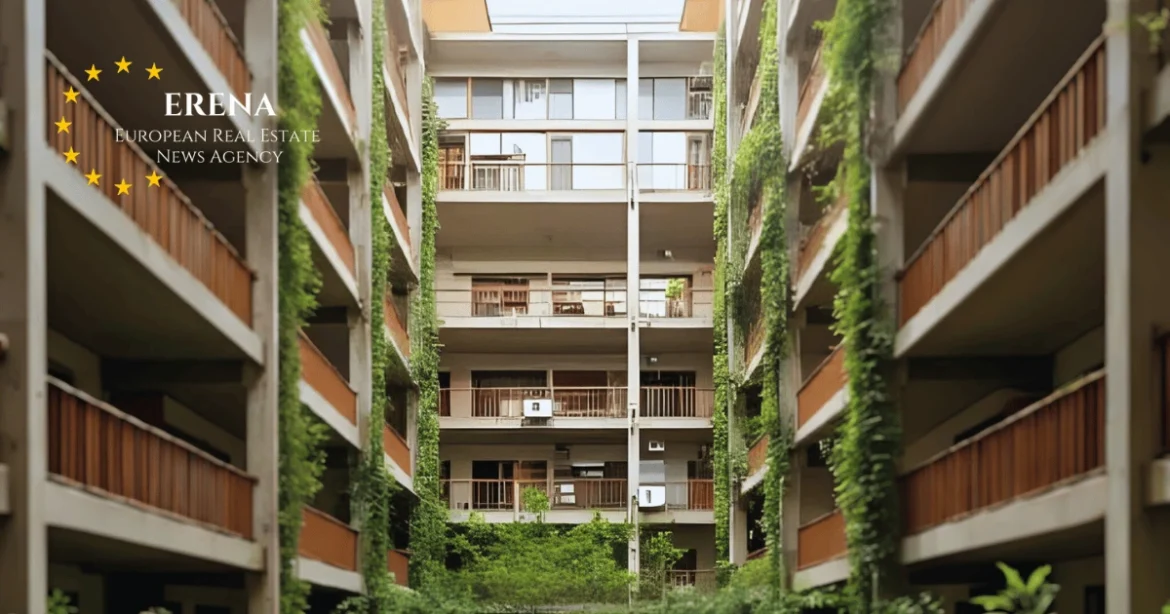In the heart of Chengdu, one of China’s fastest-growing megacities, stands one of the most striking architectural experiments of the 2000s — Manhattan Nature, a residential complex often called a “dollhouse” or “showcase.” Its façade is divided into clean rectangular grids, like display shelves in a shop window, where each apartment seems to be its own exhibit of urban life.
Architectural Concept: The City on Display
Located on Xinxiwang Road in Chengdu’s Wuhou District, the building was completed in the early 2000s as part of a new wave of urban design seeking transparency and density at once. The concept unites three floors into one residential module, each containing four individual homes positioned symmetrically around shared spaces.
From a distance, the building resembles a vast LEGO grid — a literal showcase of urban living. This visual effect made Manhattan Nature go viral on Chinese social media, and it even appeared in an episode of Japan’s science-culture show “Galileo,” which explored what daily life looks like inside the “transparent” tower.
Inside the Dollhouse: Light, Air, and Noise
Each apartment ranges between 85 and 120 m² (915–1,290 sq ft) and typically features duplex layouts with a living area and kitchen on the lower floor and bedrooms with terraces above. Many residents have customized their interiors, adding glass partitions or shutters to reduce visibility from the outside while keeping natural light. Residents praise the brightness and airflow, thanks to the semi-open courtyards and multi-level terraces, but they also note downsides — street noise, inconsistent insulation, and a challenging maintenance system due to the fragmented façade.
Prices and Market
Despite its unusual design, Manhattan Nature remains desirable for middle-income buyers in Chengdu. As of 2025, resale apartments sell for 15,000–20,000 CNY per m² (≈ €1,950–2,600 /m²). A 100 m² (1,075 sq ft) unit typically costs 1.8–2.2 million CNY (≈ €230,000–285,000). Monthly rents range between 6,000 and 8,000 CNY (≈ €780–1,050). While far below prices in Shanghai or Beijing, this remains above Chengdu’s city average — a premium attached to the building’s design reputation.
From Architecture to Internet Legend
When images of Manhattan Nature resurfaced in 2024, Chinese and international media dubbed it “the real-life dollhouse.” TikTok and Douyin videos showed residents framed in window boxes, comparing the structure to scenes from Wes Anderson films. The aesthetic was deliberate: architects intended to challenge the border between private and public space, making everyday life part of the city’s visual rhythm.
Over time, however, the project exposed practical flaws — inconsistent maintenance, varying renovation styles, and poor coordination between units. Local authorities have since discussed a façade restoration plan to preserve its original look.
What It Represents
Manhattan Nature captures a unique chapter in Chinese architecture — a period when designers experimented with Western-style transparency and local compactness. Two decades later, the tower still sparks debate about how far architecture can blur the line between visibility and privacy. Love it or hate it, Manhattan Nature has already become a Chengdu landmark — and an urban legend.
Daily Life and Community Vibe
Beyond its viral fame, Manhattan Nature has developed its own small ecosystem of community life. On weekends, residents gather in the open courtyards for tai chi sessions, tea ceremonies, or evening markets selling local snacks and handmade crafts. A few ground-floor apartments have been converted into small cafés and co-working spaces that overlook the lively pedestrian lanes nearby. This combination of urban density and neighborhood warmth has turned the building into more than just an architectural experiment — it’s a reminder that even the most futuristic design can evolve into a real, lived-in community.


